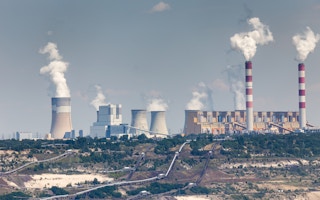It’s not the sort of league table that anyone is proud of leading, but a new report on the European Union’s power sector lists the EU’s 30 most polluting energy plants – all powered by coal.
Germany and the UK tie for first place overall in “Europe’s Dirty 30” league, each having nine of the most polluting power plants, pumping hundreds of tonnes of climate-warming greenhouse gases into the atmosphere.
In the individual polluting category, the mighty coal-fired Belchatow power plant in Poland tops the league, followed by two facilities in the north of Germany – one at Neurath, and the other at Niederaussen.
The report, which is based on 2013 statistics, is the work of a number of organisations, including Climate Action Network Europe, the World Wildlife Fund and the European Environmental Bureau (EEB).
“
Europe’s coal addiction is bad for people’s health, bad for the environment, and has no place in our sustainable energy future
Christian Schaible, senior policy officer, European Environmental Bureau
Low coal prices
The report says the EU’s coal-fired power plants – there are about 350 of them in total – are running at or near full capacity due to relatively low coal prices in Europe compared to other less polluting fuels, such as gas.
Although the EU’s use of coal for power generation has dropped significantly compared to 1990 levels, coal consumption in Europe’s energy sector has been increasing in recent years.
Much of the coal burned in Europe is lignite or hard coal – the most polluting kind. The EU has also been importing large amounts of coal, particularly from the US, where many power producers have been switching to fracked gas – less polluting and, in the US, a cheaper fuel.
The report says the price paid for electricity generated from coal does not reflect the damage it causes to the climate, air quality and human health.
“Europe’s coal addiction is bad for people’s health, bad for the environment, and has no place in our sustainable energy future,” says Christian Schaible, a senior policy officer at the EEB.
Arguing for exemptions
“Significant amounts of emissions could be prevented and reduced if operators would just use state-of-the-art techniques available, instead of arguing for exemptions.
“Environmental standards for power plants should serve to protect the people and the environment in Europe, and must be implemented swiftly to do so.”
The report’s authors point out that recent increases in emissions from the EU’s coal-fired power sector are not due to more coal-fuelled facilities coming on stream, but rather because existing plants are running at full capacity.
Some of these plants are due to be phased out under EU directives on pollution control. The study says this is vital if the EU is to meet its emission reduction targets, centred on cutting overall emissions of greenhouse gases by 40 per cent on 1990 levels by 2030.
But there are signs that short-term economic interests are taking precedence over long-term goals on controlling climate change.
“Current developments in EU energy and climate policy may allow or even incentivise the prolonged operation of coal plants, and thus conflict with the EU’s own climate targets,” the report says.










